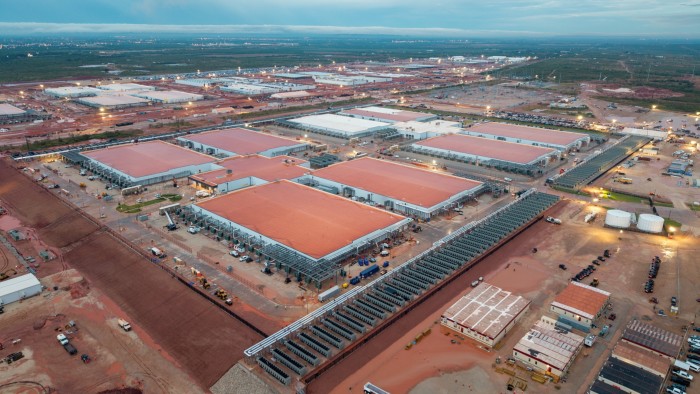Unlock the Editor’s Digest for free
Roula Khalaf, Editor of the FT, selects her favourite stories in this weekly newsletter.
The artificial intelligence boom is entering a new and riskier phase. Global capital expenditure on chips, data centres and cloud infrastructure has, so far, been driven by hyperscalers, funded largely through their vast internal cash balances. But the projected scale of computing power needed for generative AI is now prompting a shift towards more leveraged, opaque and circular financing structures, which raises the economic stakes riding on the technology’s success.
Between now and 2029, global spending on data centres is forecast to hit almost $3tn, according to Morgan Stanley. Big Tech groups will remain major spenders, but cash flows from their advertising and cloud computing businesses can only stretch so far. Many are increasingly looking to public and private credit sources to support further expansion. In August, Meta raised $29bn — including $26bn of debt — from private capital investors to fund centres in Ohio and Louisiana.
Although large tech groups still enjoy strong credit ratings, debt is being channelled into projects for non-investment-grade borrowers, such as CoreWeave, ChatGPT developer OpenAI and smaller AI start-ups. Finance is also being secured from other companies within the tech supply chain, creating a dense and interdependent web of exposures. This year OpenAI has announced over $1tn worth of deals for computing power with Nvidia, Oracle, CoreWeave, AMD, and, on Monday, Broadcom. Some agreements have involved complex circular financing arrangements.
The shift in financing broadens the potential economic and financial fallout should generative AI fail to live up to its promise. Until now, most concern has centred on the stock market. Last week, the IMF and Bank of England both warned that tech valuations were approaching dotcom-era extremes, heightening the danger of a sharp correction in global equities. A sudden reversal would hit investment funds, pensions and retail portfolios. But the growing reliance on debt, particularly from lower-quality issuers, now also leaves banks and the highly leveraged non-bank sector exposed to any defaults. Incestuous bilateral funding deals only amplify the risk of domino effects.
The pressure on generative AI to show it can generate the revenue needed to justify today’s investment — and pay back creditors — will intensify. ChatGPT recently reached 800mn weekly active users, and is widely used by consumers in their everyday lives. That said, broader business adoption will take time, and the longer the anticipated boost to economy-wide productivity fails to show, the greater the risk of a pullback in funding, and defaults. There are other risks too: chip innovation might mean data centres become obsolete faster than anticipated, and poor access to cheap electricity could render them unviable.
Even if the AI build-out proves to be overzealous, history suggests the excess could leave behind useful infrastructure, much like the railway boom of the 19th century or the fibre networks laid during the dotcom bubble. A glut of cheap compute power could then support the next wave of growth and innovation.
Either way, the data centre investment surge is no longer just a bet on productivity, but increasingly a test for financial stability as well. With credit, capital and confidence set to be more entwined, a stumble could shake far more than tech valuations. Corporate discipline, investor scrutiny, and regulatory vigilance will now be more important in ensuring the AI boom builds more than it breaks.

